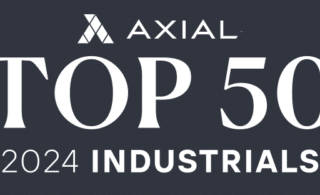
Specialty Chemicals represent a $730 billion industry. While fragmented, the industry comprises five major strategic markets—plus “Other”—as illustrated in Figure 1.
Figure 1: Global $730 Billion Specialty Chemicals Market Segmentation

Source: ChemQuest, Marketline
Within this landscape, there exists a common source of raw materials known as chemical intermediates. Intermediates are the key “building-block” substances synthesized to deliver desired functional performance to formulated products such as plastics, cosmetics, home care products, agricultural chemicals, coatings, adhesives, inks, pharmaceuticals, etc.
Intermediates comprise a number of important ingredients within a single formulation accounting for $217 billion globally of the $730 billion specialty chemicals space as shown in Figure 2.
Figure 2: Chemical Intermediates—Key “Building Blocks” in a $217 Billion Global Industry

Source: ChemQuest, Marketline
Recent M&A trends point toward specialty chemicals spaces, and specifically intermediates, as being hot investment opportunities. Why are these intermediates perceived as the “darling?”
The simple answer is that the space is attractive for sustainable growth. However, the devil always is in the details. The most attractive features of the space include the following:
- Predictable business with consistent performance representing “sticky customers,” good cash flow, and ROI. These businesses typically operate at good, consistent EBITDA margins within a range of 12 to 20 percent EBITDA with relatively low capital intensity and low volatility;
- Good barriers to entry exist including fragmented customer base, regulations, brand equity, breadth of technologies, and a relatively high degree of service intensity;
- Attractive market structure with an identifiable growth profile including value-added products (often uniquely formulated) and services, low risk of obsolescence, and customer globalization providing opportunities to access high-growth emerging markets.
Shareholder return over the last 10 years validates the attractiveness of the industry. As can be seen in Figure 3, intermediates outperformed the rest of the chemical industry since 2010, with a total shareholder return of 169 percent from 2010 to 2014, a factor of 2-3X versus its peer group.
Figure 3: Intermediates vs. Chemical Industry Total Shareholder Return

Source: ChemQuest, FactSet
Market valuations of intermediate firms, have—as a result—been on the rise in 2014-2015, approaching an EV/next-12-month EBITDA multiple of nearly 12X, a rise in excess of 25 percent compared to the weighted average in 2012-2013.
Factors driving this performance include:
- Continued consolidation
- Reduction in oil and energy costs
- Emerging region growth
- Innovation
- U.S. housing and construction recovery
- Oil and gas exploration globally
- Global automotive builds
Key external trends impacting the intermediates segment include:
- Ongoing environmental regulations with proposed and enacted carbon caps to reduce emissions, volatile organic compounds as air pollutants, and growing water supply concerns in many regions;
- Chemical management regulations such as the European REACH program and global sustainability initiatives with greater emphasis on life-cycle assessments;
- Greater demand for sustainable products throughout the value chain.
The industry is not without challenges. Geographical turmoil is a leading cause of disruption in emerging regions. Accelerating R&D investments to meet changes in regulations and product innovation to address demand in new uses (e.g. growth in use of alternative energy globally and opportunities due to lightweighting such as substrate shifts, i.e. composites and higher use of plastics and light weight metal alloys) adds to the complexity management has to sort through.
Likewise, threat of new entrants from China, cost efficiency, currency volatility, increasing cost of labor, tort, and changes in corporate tax codes along with potentially increasing interest rates are all formidble headwinds that management must deal with to retain the value the industry has created and maintain the pace and consistency of earnings growth.
In closing, the intermediates industry, while complex, provides ample opportunity for sustainable profitable growth. Improving economic prospects coupled with rising levels of disposable income underscore a rosy outlook.
Fundamentally, the industry is in the best shape in years with balance sheets and income statements at their healthiest. We anticipate this combination—coupled with ample money supply at record low interest rates—is a receipe for continued deal flow in the short-to-medium term.











